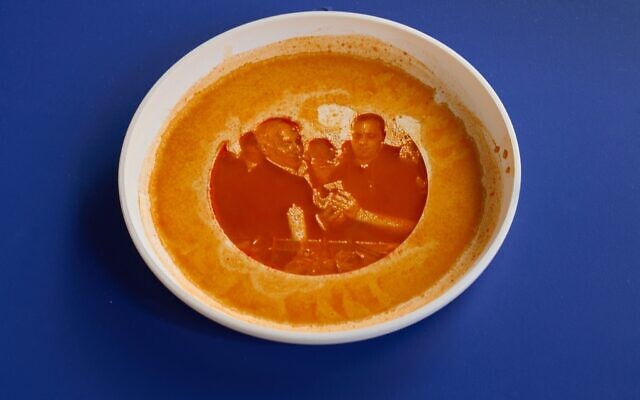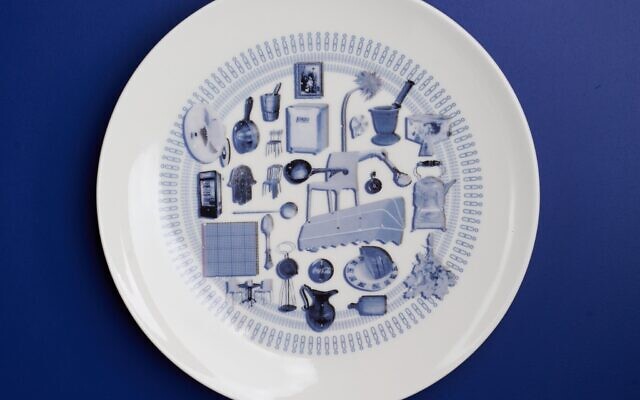Israelis love their hot lunches, whether a bowl of Iraqi-style kube soup, thin, crispy fried chicken schnitzel alongside piles of French fries and salad, or a steaming mound of white rice and beans.
Those are the kinds of meals that have long been the stock-in-trade of so-called workers’ restaurants, the simple mom-and-pop operations still found in Israel’s industrial areas and now the subject of “Home, Away From Home, Away from Home,” a new exhibit at Tel Aviv’s Asif culinary center.
The exhibit, curated by Liora Rosin and Rona Zinger, follows the trajectory of changes in the making and serving of this simple, homestyle food.
The limited but satisfying exhibit, set along one side of Asif’s first-floor space and adjacent to its in-house cafe, offers a gallery of videos alongside a collection of plates designed by 15 graphic artists, ceramicists, illustrators and industrial designers, showing the history and progression of the workers’ meal.
There are plates designed in the style of Delft blue-and-white dishware, white dishes illustrated with images familiar from the simple restaurants, and the Plate of Fame, harkening to the wall of celebrity customers often featured in the restaurants — this one 3D printed to look like a plate of leftover gravy, with a photo of a well-known politician gradually revealing itself.
Get The Times of Israel's Daily Edition by email and never miss our top stories
A video work by Nadav Harel at the entrance to the gallery shows a roving display of the different meals and tables at restaurants, while Lihi Berger’s diorama of a table is based on her conversations with owners and customers, with the familiar napkin and toothpick dispensers, salt shakers and placemats.

Shaul Cohen’s plate designed for an exhibit about workers’ restaurants at Asif culinary center shows a 3D gravy-printed plate with an image of Benjamin Netanyahu underneath (Courtesy, Dor Kedmi)
The meals, said Rozin, always represented an unwritten contract that the customer would receive a full, satisfying meal that was close to their workplace and enabled them to go back to work quickly.
Apropos of the time element is a black-and-white clock hanging above Berger’s table diorama, showing how crucial the passage of that one hour was for someone punching a clock.
The films by Dan Peretz and Ilia Marcus break the myth of what today’s physical laborers eat for lunch, showing Thai workers and their lunches of sticky rice and chicken legs served from plastic containers and bamboo rice baskets, while Palestinian or Sudanese construction workers partake of different lunches during their lunch breaks.

Noa Riz’s Delft-like plate for an exhibit about workers’ restaurants at Asif culinary center that opened January 22, 2023. (Courtesy Dor Kedmi)
One subject Rosin and Zinger did not tackle is the new lunchtime restaurants found in business parks and more upscale work areas, where high-tech companies offer their staff lunchtime budgets for meals that may seem more upscale and still fit the bill for a filling, hot lunch.
The Asif website also includes articles, recipes, stories, and photos.


